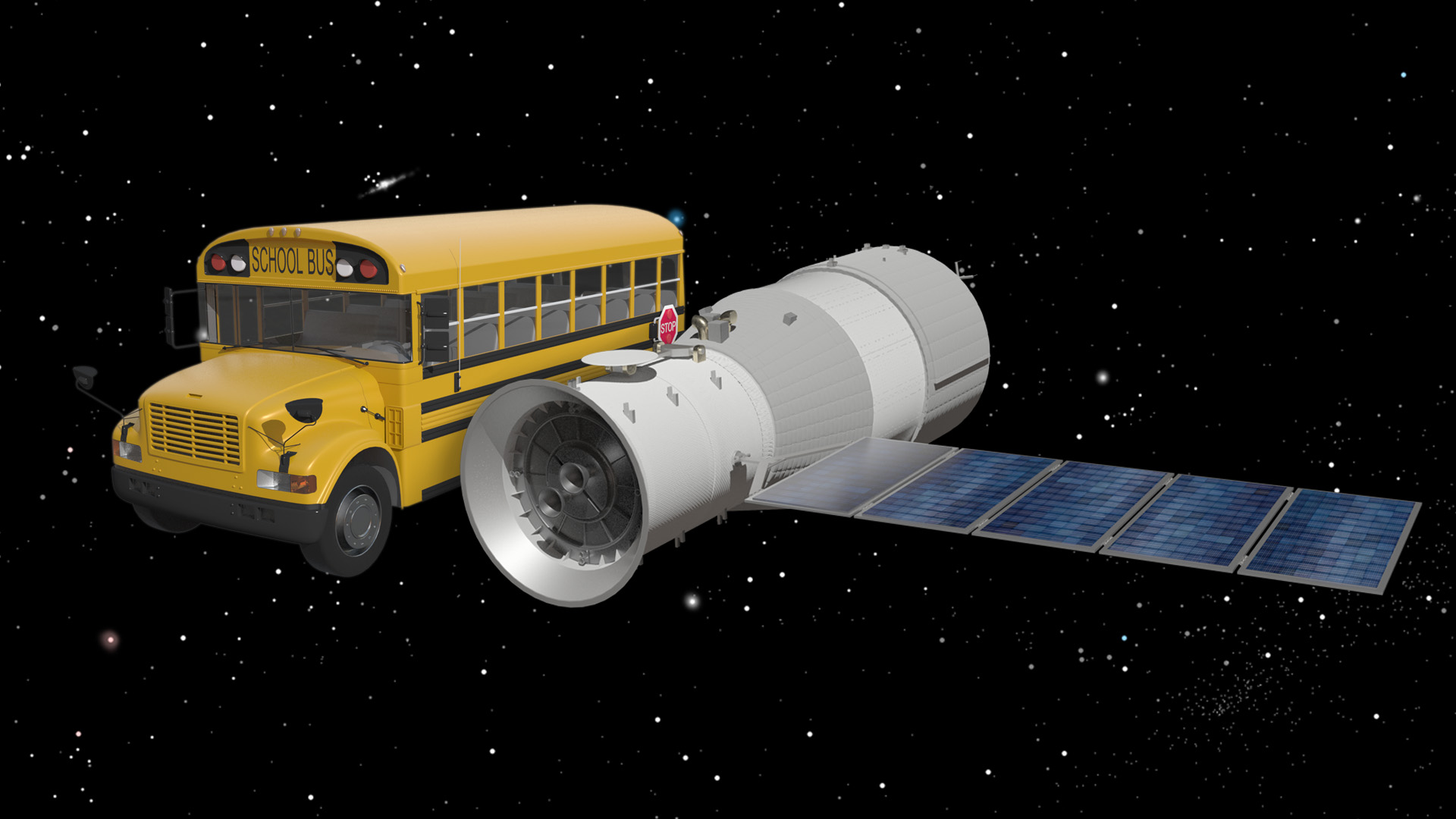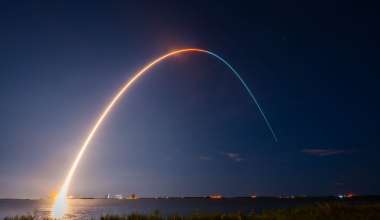Ever since March 16, 2016 when China first reported to the United Nations that their space station, Tiangong-1 “ceased functioning,” the world has been waiting, watching and wondering where on Earth any of its remnants would land. For Tiangong-1’s reentry to Earth’s atmosphere, China’s original plan was to control its descent using thruster burn. At some point near the end of the space station’s mission, China somehow lost control of Tiangong-1 leaving it poised to make an uncontrolled reentry.
Finally, after months of speculations as to when and where, on April 1, 2018 at 5:16pm Pacific Time, Tiangong-1 officially made its fiery reentry back to Earth. If all of this sounds vaguely familiar, this is not the first time the exploits of a falling Tiangong-1 has appeared in the media. In the 2013 Academy Award-winning film “Gravity,” Sandra Bullock plays an astronaut who uses the deorbiting Tiangong-1 as a return vehicle to Earth after her space shuttle is damaged by space debris.

What is Tiangong-1?
Sent into orbit on September 30, 2011, Tiangong-1, or “Heavenly Palace 1,” is China’s first space lab, the prototype for China’s ambitious space program to launch a permanent, 20-ton space station in 2023. Tiangong-1 weighed 8.5 tons, measured 34 feet by 11 feet, and was the approximate size of a school bus. The space station’s initial launch was unmanned, but it had a habitable experimental module to house astronauts. Its primary mission was to perform docking and orbital experiments. Over a five-year period, two successful manned missions by taikonauts (Chinese astronauts) took place, which included China’s first female astronauts, Liu Yang and Wang Yaping.
How did Aerospace Know Tiangong-1’s Time of Reentry?
While there were no movie stars or astronauts aboard the real-life Tiangong-1, its homecoming was nonetheless still of supreme interest to the space industry and the public. The space station kept aerospace agencies and companies worldwide busy trying to estimate the date and time of its return. Tiangong-1’s reentry was being closely monitored by The Aerospace Corporation’s Center for Orbital and Debris Reentry Studies (CORDS). Established in 1997, CORDS advises government and commercial businesses about space debris and collision avoidance. The organization also monitors the reentry and breakup of space hardware.
It is not easy to predict when an object will return from space due to multiple factors, including an object’s orientation, location, physical properties, speed, space weather, and the density of the upper atmosphere to consider. “We monitored data closely and performed reentry calculations on a regular basis to keep track of any changes in the space station’s orbit or decay rate,” said Andrew Abraham, a member of Aerospace’s Department of Mission Analysis and Operations team, which tracked Tiangong-1’s journey back to Earth. If bets had been taken on Tiangong-1’s time of reentry, Aerospace would have been a winner since the company estimated that reentry would take place on April 1, 2018, give or take 36 hours.
Was Tiangong-1 a Danger?
Tiangong-1 was never a danger to anyone or anything on Earth despite the fact it was on a decaying orbit which means its altitude was slowly decreasing as its falling speed toward Earth rapidly increased. When it reached Earth’s upper atmosphere, the space station made its uncontrolled reentry. However, upon reentry, most of Tiangong-1 burned up due to extreme heat and violent forces. Objects compress air beneath them as they reenter Earth’s atmosphere, producing intense heat. These high temperatures and pressure cause objects to break, melt, and vaporize, so there was little left of Tiangong-1 besides fragments to actually land on Earth.
Large space station parts, especially those that are thermally protected like fuel, oxygen, and water containers sometimes survive, but the odds that they will hurt anyone is extremely slim. In fact, Aerospace calculates the odds of space debris hitting a person to be less than one in 1 trillion; you have a better chance of being struck by lightning.
Did Tiangong-1 Space Debris Land Anywhere?
If it did, it landed in the South Pacific Ocean. Timing dictates the location of an object’s reentry, so predicting exactly where it will fall is difficult. Calculations suggested Tiangong-1 would reenter somewhere between the latitudes of 43 degrees north and 43 degrees south. Original estimations of exactly where encompassed a widespread portion of Earth, including the northern U.S., the Middle East, northern Spain, parts of France, Portugal, Greece, central Italy, parts of Chile and Argentina, New Zealand, Tasmania, southern Africa, and northern China. Aerospace predicted that any surviving pieces from Tiangong-1 would fall within a 200-mile radius and be centered along a point on Earth that it was passing over. And since Earth is mostly covered by water, it was very likely that any space debris from Tiangong-1 would probably fall into a body of water which is exactly what happened.







